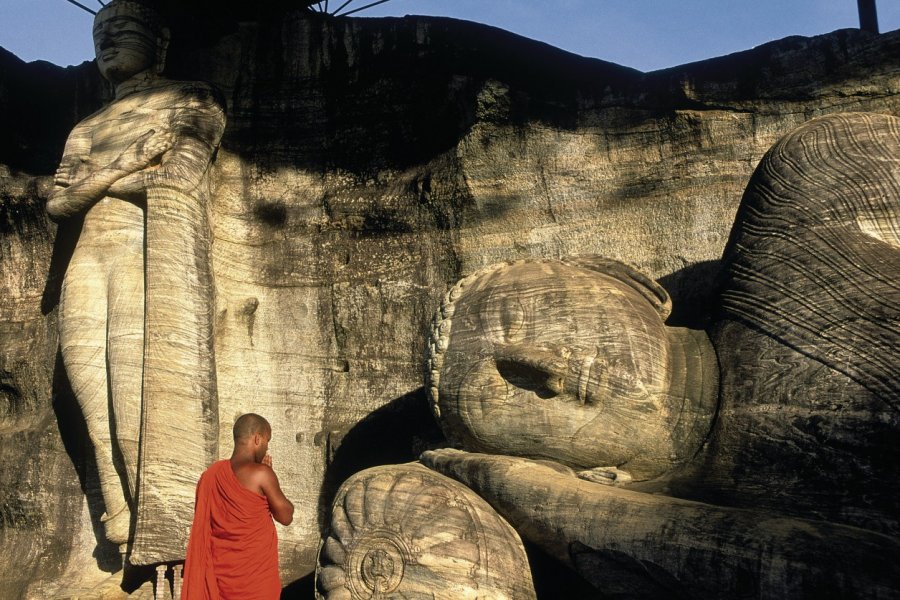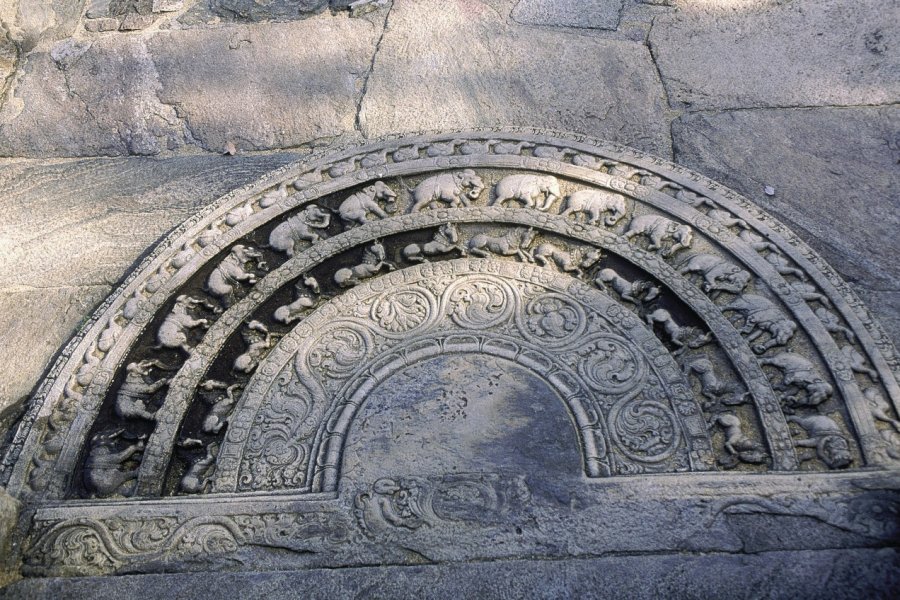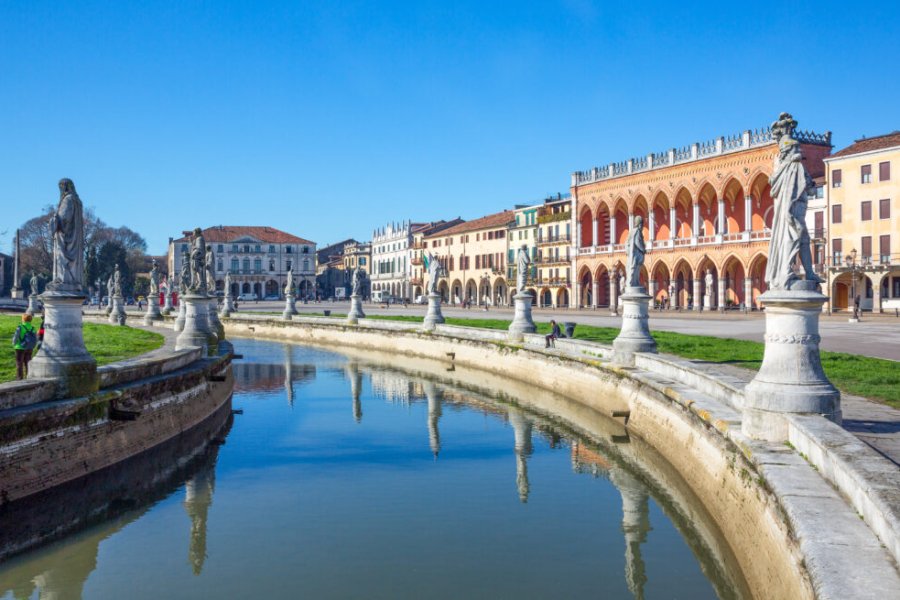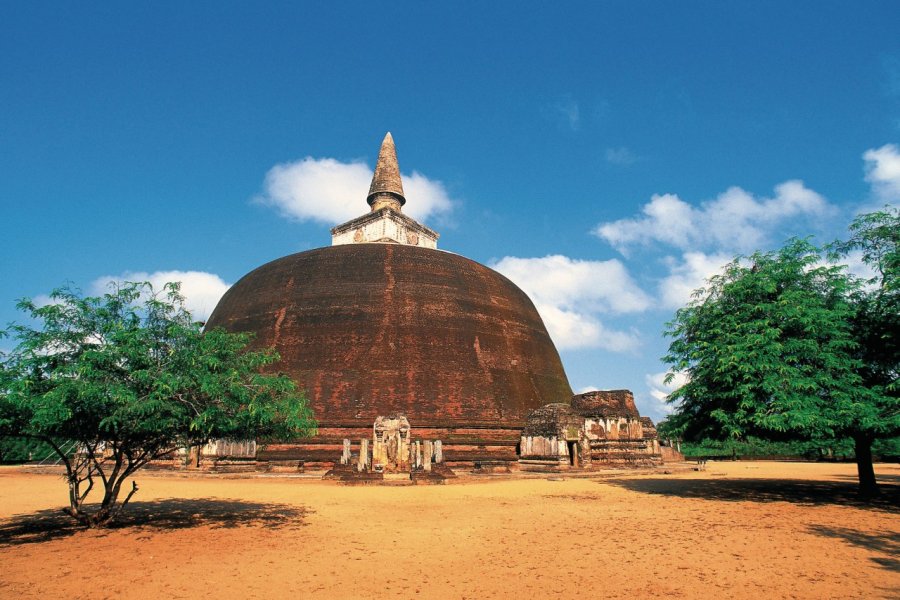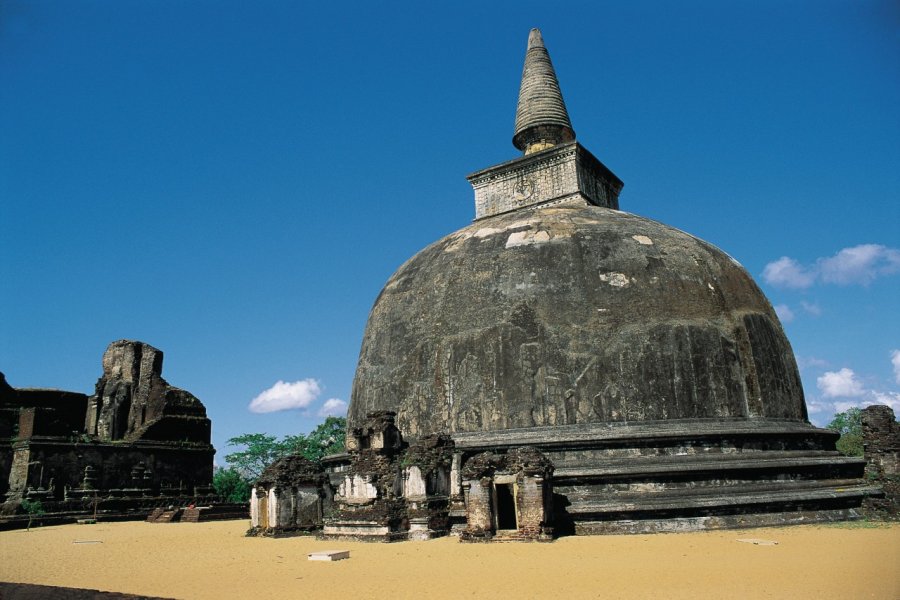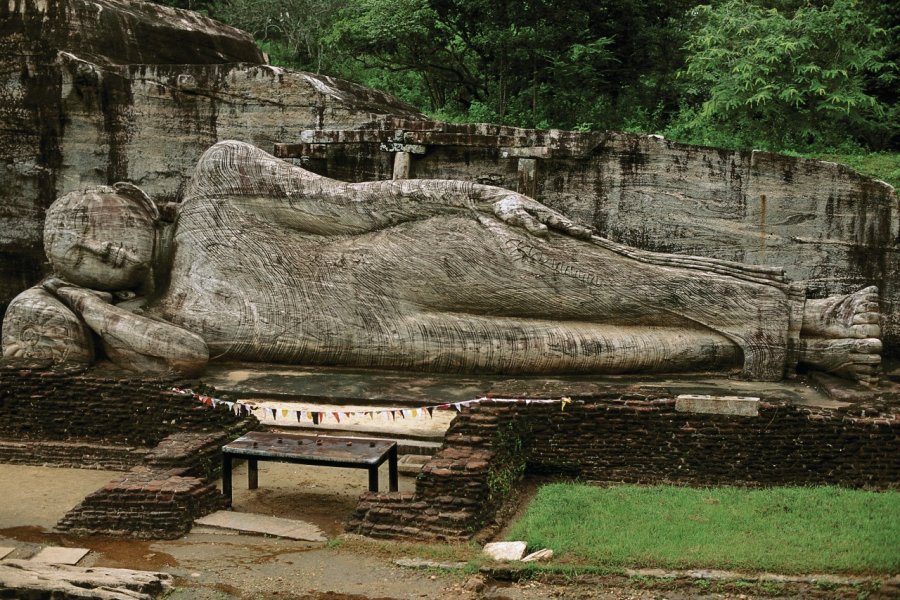Travel Guide Polonnaruwa
Find an accommodation
Advertising
44 km east of Habarana and 140 km northeast of Kandy. You are now in the heart of the ancient capital of the Cholas. In the 11th century, this ancient dynasty of southern India could more easily control the center of the country from Polonnaruwa than from Anhuradhapura, which had been conquered earlier. Their domination lasted until 1070, when the Sinhalese king Vijaya Bahu I drove them out of the island. Polonnaruwa then became the capital of a brilliant Buddhism. The city was fortified in the 12th century by King Parakrama Bahu I, who undertook gigantic works: construction of gardens and above all a huge reservoir of 2,400 ha, capable of irrigating the neighboring rice fields. Still in activity, this small lake is nicknamed Parakrama Samudra (the sea of Parakrama). His successor, Nissanka Malla, was not as happy in his projects although they were also noble, and little by little Polonnaruwa began to decline: it underwent again the Indian invasions, then Malay. In the 13th century, the capital was transferred to the west of the country, and the luxuriant vegetation of the jungle invaded it. Plundered by the Portuguese, Polonnaruwa fell into oblivion until the 19th century. Since then, it has been the subject of numerous excavations, notably by the British. The site is classified as a World Heritage Site by UNESCO since 1982.
What to visit Polonnaruwa?
Advertising
Suggested addresses Polonnaruwa
Weather at the moment
Advertising
Organize your trip with our partners Polonnaruwa
Transportation
Book your plane tickets
Car Rental
Boat rental
Accommodation & stays
Find a hotel
Holiday rental
Find your campsite
Tailor-made trip
Immersion travel
Services / On site
Activities & visits
Find a doctor
